Content marketing frameworks that will get you paid more - Rise at #SearchLeeds
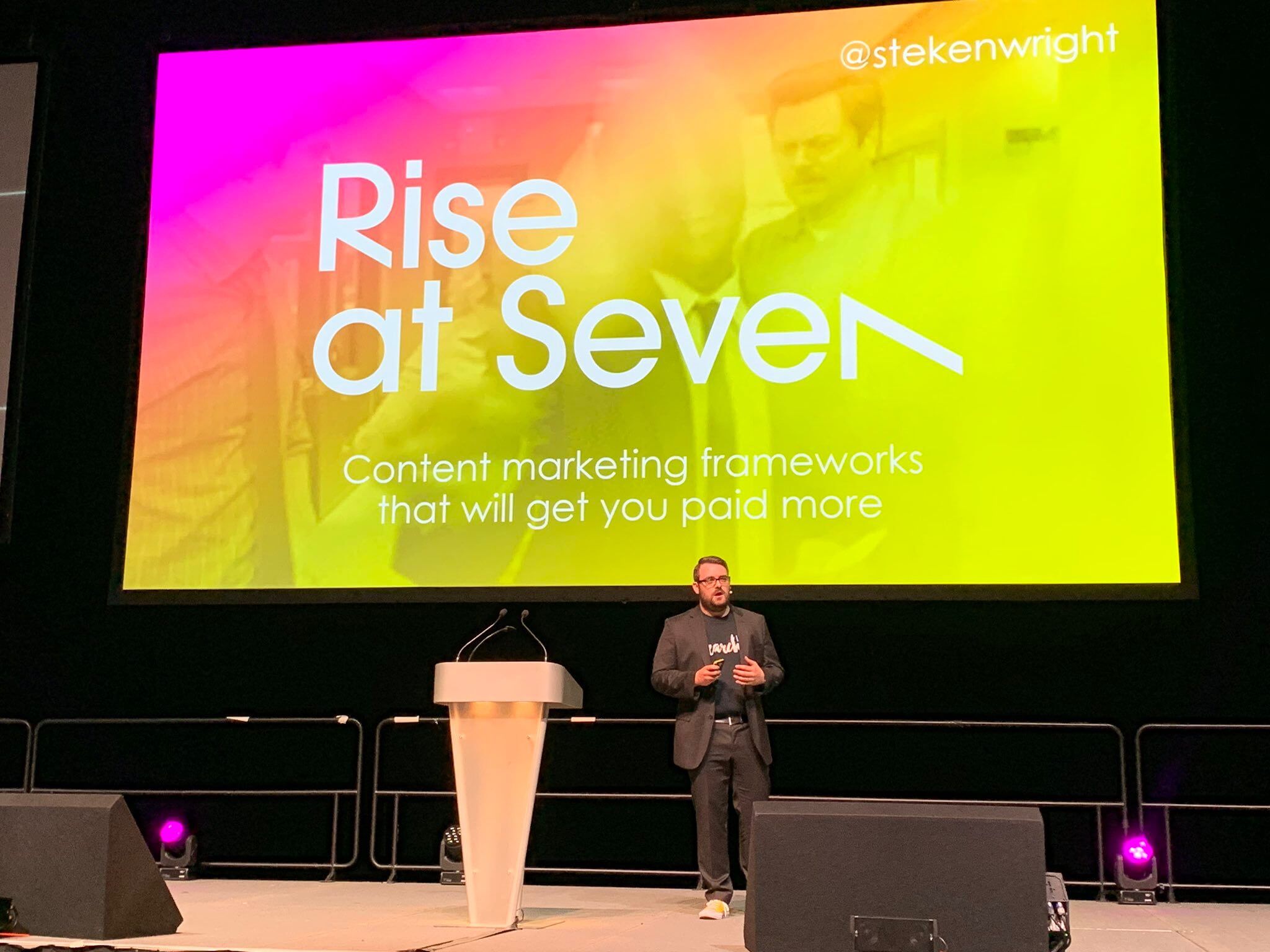

Stephen Kenwright CCO & Co-founder
5 min read
Tuesday, 15th February 2022
The 4th edition of SearchLeeds was bigger and better than ever - Charlie Harris, Frankie Bisi and the whole Edit team did an amazing job and I know the conference (and the SEO industry in Leeds) is in safe hands without me!
I gave a talk on content marketing frameworks. The deck is below, along with some notes around the key points and links to tools I mentioned. Any questions - or if you fancy an argument - find me on Twitter.
Think like a dandelion
When we create and publish content, we're emotionally (and financially) invested in the outcome of every single piece - which can distract us from seeing the bigger picture.
A dandelion produces hundreds or even thousands of seeds, which it fires off in all directions. It doesn't care about the fate of each seed: what's important is that every patch of grass and every crack in every pavement is full of dandelions.
For brands to fill every screen, timeline and search result, ideas need to be easy to spread. Paywalls and data capture don't spread ideas so if coverage is what you're after, break down your big content into lots of pieces and make sure people can grab them easily.
This ideas was stolen from Corey Doctorow: you can read his original idea here.
Lasswell's model of communication
American communication theorist Harold Lasswell first stated his communication model in 1948.
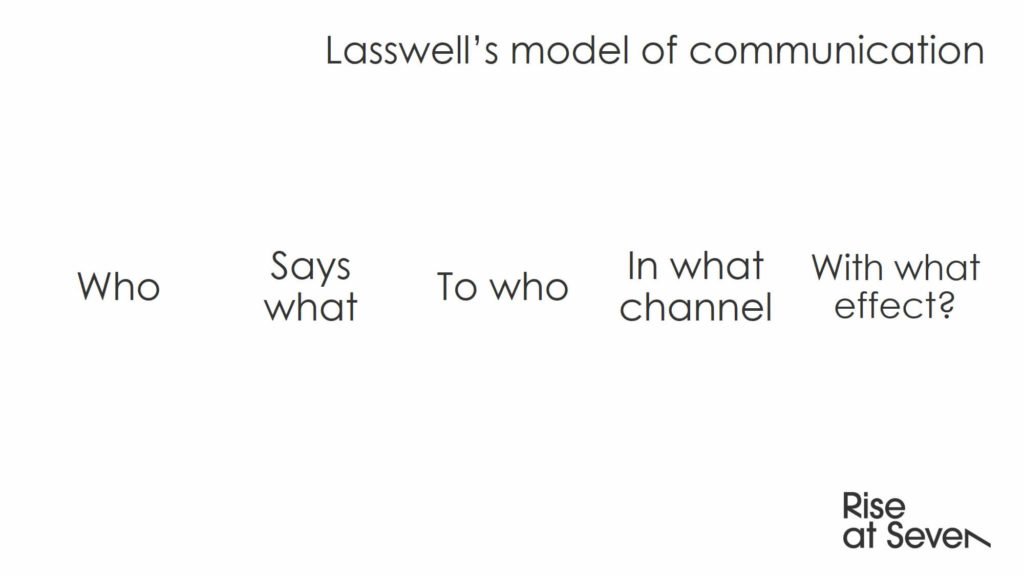
Content marketers are great at 3/5 of these: we usually know what we want to say; who our customer or audience is; and what channels we're going to use to promote our content. We don't always consider who we are (what our brand stands for and how that affects the way in which our content will be perceived) and what effect we're going to have on the audience.
Links are often the core KPI when it comes to content marketing. But if we build links without considering the lasting effects of the message we're stating...we'll just need to build more and more links.
When we think long term, bigger campaigns that exist for more than just links make the most sense.
The planning cycle
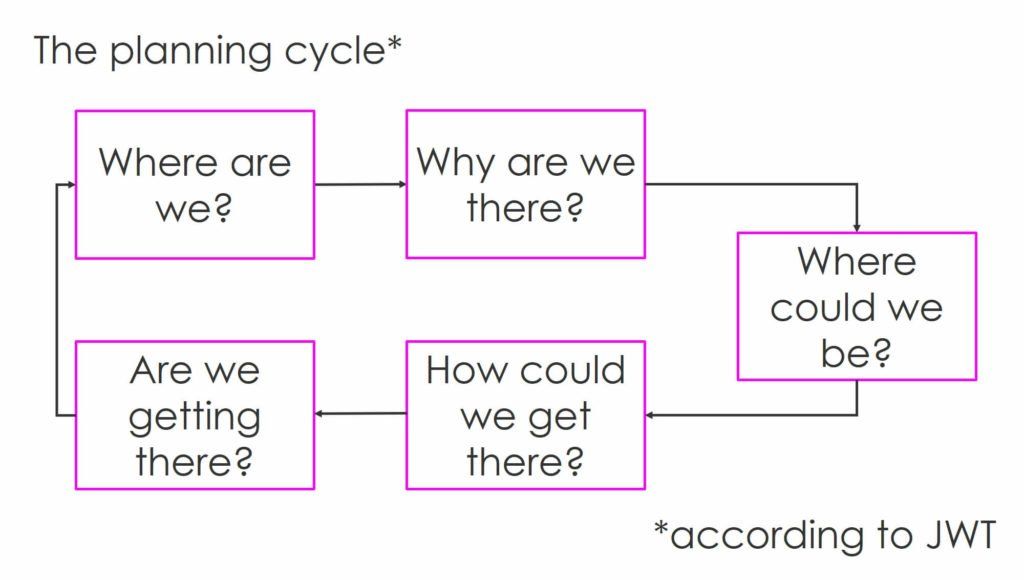
JWT, once among the most famous agencies in the world and now a casualty of holding company mergers, stated the planning cycle in a very simple way.
Content marketers are pretty good at understanding where we are: effectively, what we are lacking. Links, brand search volume, on-site content answering user intent...we diagnose issues very well.
But we should ask ourselves why we are where we are.
Why don't we already have loads of links? The answer isn't always that we haven't done link building - maybe we're just not that interesting.
Why does nobody search for us? Maybe the answer to an SEO problem lies in a more creative solution. When we think creatively, we can aim higher.
So when we ask ourselves where we could be the constraint isn't often budget. Brands with huge amounts of money are struggling to compete with teenagers using iPhone cameras for attention. We should be ambitious.
...and we should continually as ourselves if we're getting closer to where we're going and reassess. Things change.
AIDA or See Think Do Care
AIDA stands for Attention, Interest, Desire and Action. It's the traditional marketing funnel you've seen loads of times and it's been around since the 1800s.

Recently Google has repurposed this notion as See Think Do Care.
On the whole, we're pretty good at creating content for all stages of the path to purchase. But we don't always consider everything that a potential customer needs to see for that content to resonate.
Action-driving content needs both a rational and emotional aspect. The example I gave was around engine types. A quick search for "petrol vs. diesel" gives you a LOT of answers like this:
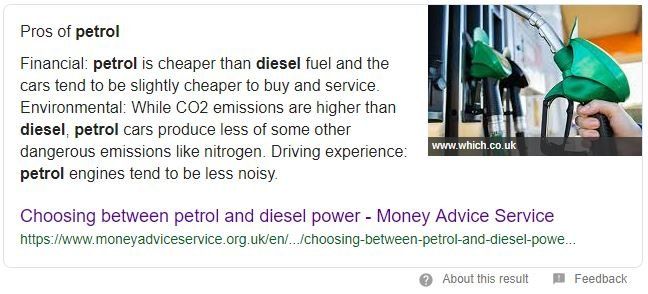
The financial aspects are well covered. Economy or range of engines. But the content doesn't answer why this is important.
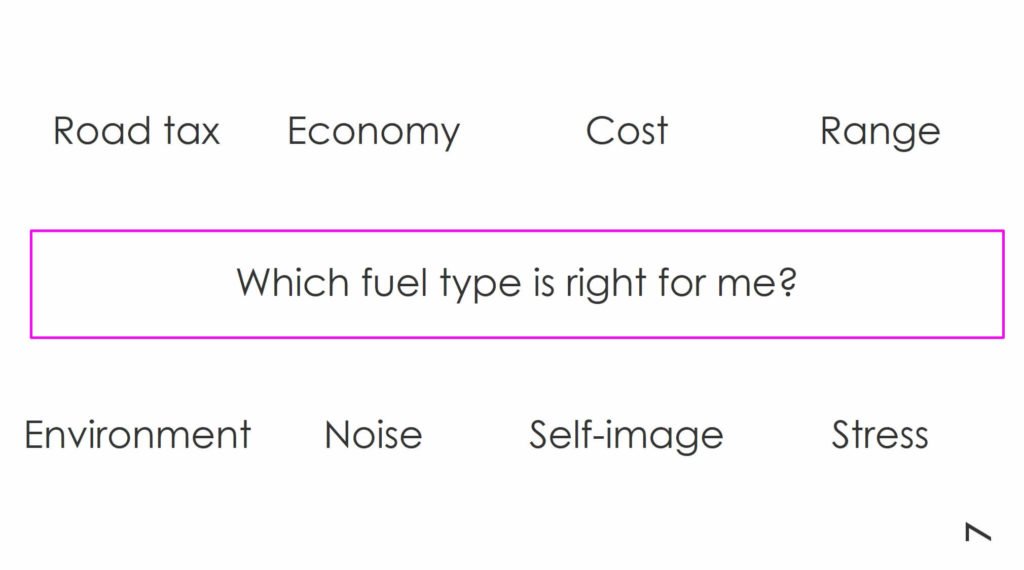
Maybe the financial reasons for changing cars are stress motivated: the customer can't afford to run the car they've got. Talk to that person.
Maybe the noise is a consideration because they want something really LOUD. Or they need to keep a baby asleep in the back and their old banger won't cut it. Talk to that person.
CO2 emissions are important but nobody knows what good looks like. The customer might just really care about being green and the numbers make no difference. Talk to that person.
More about intent
We've heard a lot in recent years about how search engines reward content that answers user intent. But user intent changes over time - and with the seasons.
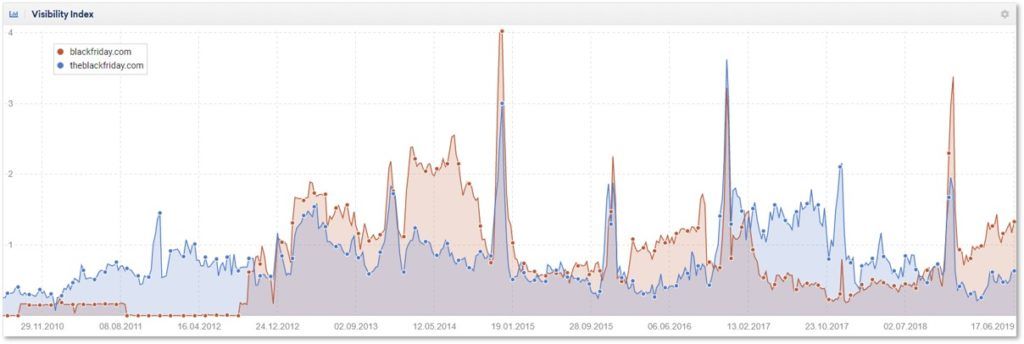
SISTRIX is a useful tool for understanding this because it normalises search volumes to remove seasonality. The graph above shows google.com rankings for blackfriday.com and theblackfriday.com without search volumes skewing the results.
Google treats "black friday" as an informational query for more than 300 days a year - searchers probably want to know when it is, what it is, or where the good deals were last year.
When the event itself rolls back around, Google completely changes its results because that query moves from a See query to become a Do query - the intent is to buy and the commercial sites suddenly appear.
If you're creating content to answer user intent at a certain time of year - make sure you're seeing results at that time too. They might be different.
Tools and links
- I talked about Gartner's Hype Cycle. Looks like this. It's an example of Amara's Law.
- I used DeepCrawl to pull Google Analytics data into a content audit.
- I used SISTRIX to check historic SERPs.
- I used Ahrefs to pull keyword ranking data and search volumes for some quick intent analysis. This process was John-Henry Scherk's idea. Smart guy. You should follow him.
- I stole the idea of editorial boards from Claire Robinson.
- I referenced this SlideShare on how Spotify builds products.
- I used the Crystal Chrome extension to understand journalists' personality types so I can pitch in a personalised way. It's free for 10 profiles.
- I talked about the straight line system for sales created by Jordan Belfort, The Wolf of Wall Street himself. He runs a course or you can read his book.
- You should buy Atul Gawande's book The Checklist Manifesto and create some checklists.
- I talked about some work Carrie did for Staveley Head at Edit. The case study is live on their site if you want to check it out.
- I stole loads of stuff from Rosie Yakob. She has a great presentation on planning tools and processes you should check out.
- I talked about using the Eisenhower matrix to prioritise workloads.
